|
|
【中文标题】一百张最有影响力的照片 之五
【原文标题】Most Influential Photos
【登载媒体】时代周刊
【原文作者】Ben Goldberger
【原文链接】http://100photos.time.com/photos/harold-edgerton-milk-drop
乡村医生
W•尤金•史密斯
1948年

尽管让W•尤金•史密斯名声大噪的是他的战争摄影作品,但让他名留青史的作品是他为《生活》杂志拍摄的一系列世纪中叶的照片故事。这位出生在堪萨斯州维奇托的摄影师连续几个星期与他的拍摄对象生活在一起,从南加利福尼亚州的护士和助产医生,到西班牙村庄的居民。他的目标是从拍摄对象的角度来观察世界,同时激励读者也去效仿。他说:“我并不想去占有我的拍摄对象,而是想把自己奉献给他们。”这一点,在他的标志性作品“乡村医生”上表现得最明显。史密斯与厄内斯特•塞里亚尼医生在科罗拉多州克雷姆灵共同生活了23天,他跟随这个不知疲倦的医生走过分散在落基山脉广袤地区的2000多户居民。他看到他如何照顾婴儿,在汽车后座上为病人注射,研究自己的X射线仪器,照料心脏病人,之后打电话叫来牧师做最后的弥撒。史密斯深深沉浸在自己的工作中,这让他可以展示出这个了不起的人生活中独特而又亲密的一面。这张照片不仅成为历史上具有重达影响力的作品,而且成为人们效仿的叙事模板。
亚瑟王宫
师海•佩斯金
1953年
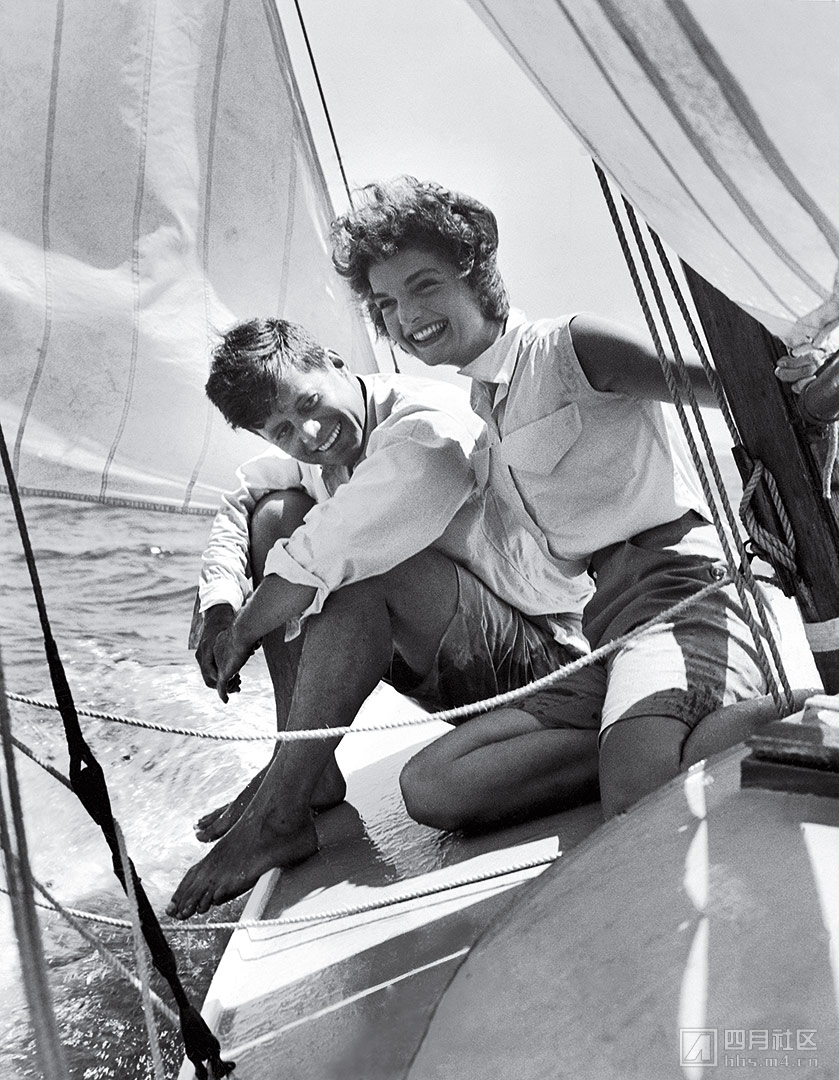
在他们正式成为美国皇族之前,美国民众想要了解约翰•费茨杰拉德•肯尼迪和杰奎琳•李•布维尔。他们的正式亮相出现在1953年夏天的一个周末,师海•佩斯金拍摄了这位帅气的政客一心追逐名利,和他那容光焕发的未婚妻。佩斯金是一位著名的体育摄影师,他受家族长老约瑟夫•肯尼迪的要求,前往马萨诸塞州海厄尼斯港。这位大使一心想让他的儿子成为国内知名人物,所以认为登上《生活》杂志封面会让民众迷上约翰、他漂亮的女朋友和这个美国最富有的家庭。的确如此。佩斯金勉强拼凑了一个所谓的“幕后”报道,标题是“参议员肯尼迪求婚记”。尽管杰奎琳对这样唐突的安排非常升起——约翰的母亲甚至教她正确的举止姿态——但她还是表示愿意上镜。读者最终才有幸得见杰奎琳弄乱“美国最帅气的年轻参议员”的头发;杰奎琳与她未来的姻亲打橄榄球和垒球;在约翰的维克图拉号帆船上远航。她后来告诉一位朋友:“他们让我在船上想待多久就待多久,随便拍照。”
这是一个完美的品牌塑造案例,肯尼迪登上了世界上读者群最大的杂志封面,就像一个踌躇满志的花花公子准备和单身生活告别。几个月之后,《生活》杂志又报道了这对夫妇的婚礼,美国人被彻底迷住了。在德怀特•大卫•艾森豪威尔和理查德•米尔豪斯尼克松等人代表的一本正经的年代里,佩斯金揭开了亚瑟王宫的面纱,彻底改变了美国人对政治和政客的理解,把约翰和杰奎琳变成地球上最广为人知的一对夫妇。
电车——奥尔良
罗伯特•弗兰克
1855年
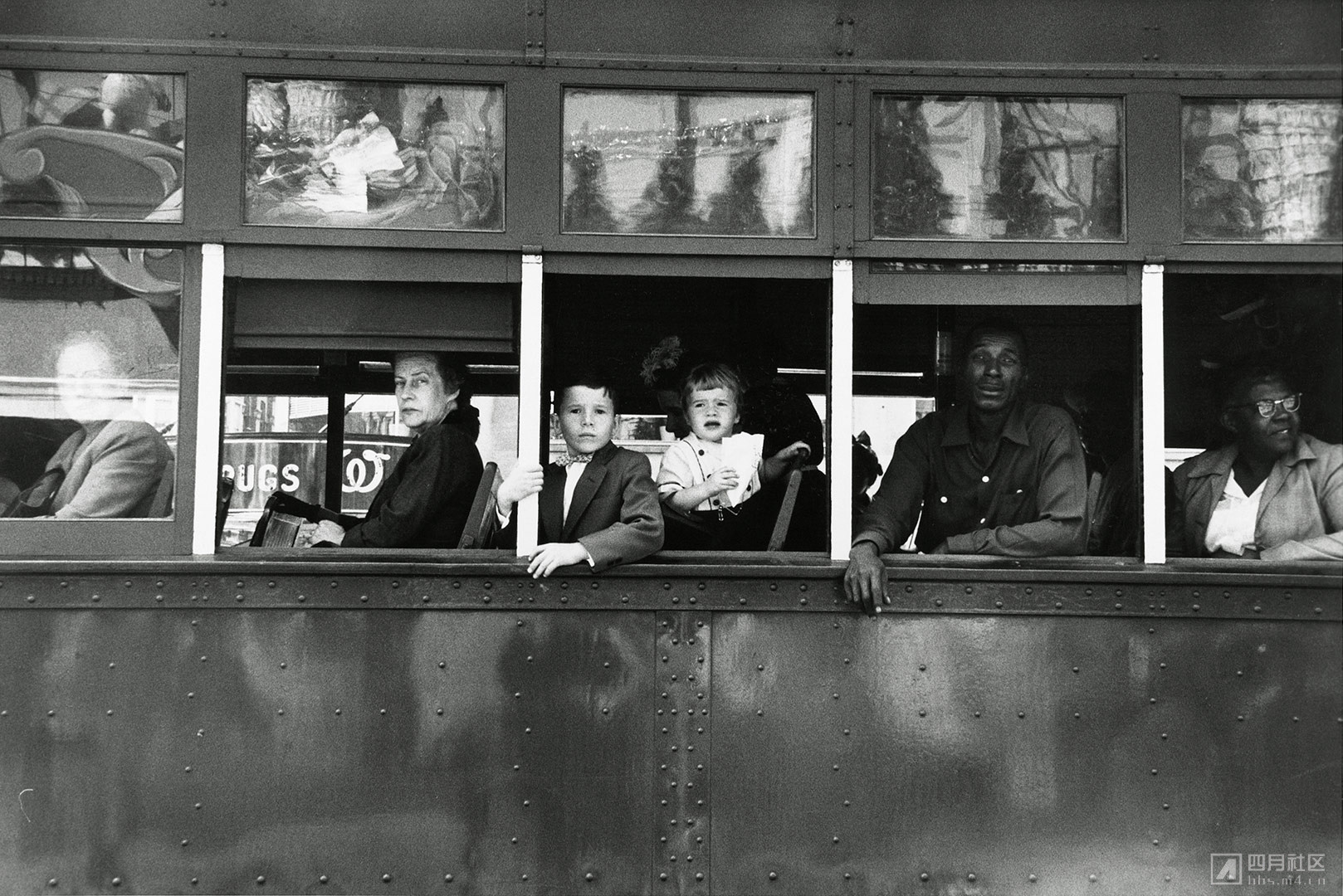
令人难以接受的事实往往会给讲述者带来不愉快的后果。在罗伯特•弗兰克出版了《美国人》一书后,《写实摄影》杂志说这位瑞士摄影师的作品就是“无意义的模糊、噪点、混乱的曝光,加上歪七扭八的地平线和邋遢的拍摄对象”。这本书里的83张照片,是弗兰克在50年代中期若干次驾车环游美国时拍摄的。它们表现了这个国家的变化:种族分裂、民权运动兴起、家族传统依然坚固、盲目地投奔城市生活。
这种紧张的态势在“电车——新奥尔良”中体现得最明显,这个瞬间表达了美国战后残酷的社会秩序。这张随手而拍的作品出现在罗莎•帕克斯拒绝在阿拉巴马州蒙哥马利的公交车上让出座位的几个星期之前。弗兰克当时正在拍摄一个盛装游行的场景,他转过身来,举起相机拍摄了一辆即将驶离的电车。这张照片被刊登在早期版本的《美国人》杂志封面,读者纷纷谴责这个作品具有反美国人的含义。当然在弗兰克看来——在《美国人》出版5年之后的1963年,他正式成为美国公民——他只是坦白呈现这个国家的本来面目,而不是人们想象中的样子。半个世纪之后,这种坦率让《美国人》成为街头纪实摄影的里程碑刊物。弗兰克自由、客观的风格解放了由《生活》杂志所创建的那种保守的摄影记者风格。他说后者是“有头有尾的烂故事”。
朵薇玛与大象,迪奥提供的晚礼服,巴黎冬季马戏团,1955年
理查德•艾维顿
1955年

当理查德•艾维顿于1955年在巴黎一家马戏团为《时尚芭莎》拍摄朵薇玛的照片时,两人都已经在自己的行业中功成名就。她是世界上最著名的模特,他是最著名的时装摄影师。毫无意外,“朵薇玛与大象”因此成为有史以来最著名的时装摄影作品之一。但它所发挥的巨大影响力既与拍摄内容有关,也与参与拍摄的人员有关。朵薇玛属于最后一代传统的超级模特,高级时装还属于小众、精英的圈子。50年代之后,模特们开始走“邻家女孩”的路线,而抛弃了那种只可远观地位,高级时尚也因此进入了娱乐业。“朵薇玛与大象”传达了这种转变的信号,它让大象的庞大躯体和力量与朵薇玛的纤美同框出镜——当然还有她精美的晚礼服,这是伊夫•圣•洛朗设计的第一件迪奥晚装。这张照片还适度扭转了从前典型的静止摆拍模式。模特长久以来被当作人体模型,他们必须静止不动,让服装得到充分展示。艾维顿发现了这种模式中存在的问题,不仅服装会定义人,人也会定义服装。让模特走出工作室,置于多样化的背景中,他模糊了商业时装摄影与艺术的界线。从这个意义上说,“朵薇玛与大象”代表了一种文化转移的风向标:最后一个传统意义上的模特,投身于新的时装艺术。
艾默特•提尔
戴维•杰克逊
1955年

1955年8月,来自芝加哥的黑人少年艾默特•提尔到密西西比州走访亲戚,他路过布莱恩特杂货店。在那里,他遇到了一个白人女性卡罗琳•布莱恩特。提尔是否调戏了布莱恩特,抑或向她吹了口哨,我们不得而知。但4天后发生的事情是,布莱恩特的丈夫罗伊和他同父异母的弟弟J•W•米拉姆把14岁的提尔从他祖父家掳走。这两个人殴打提尔,用手枪把他杀死,还用铁丝把一个75磅重的金属扇叶捆在他的脖子上,让尸体沉入塔拉哈奇河底。一个白人陪审团很快宣布这两个人无罪,一个陪审员说之所以花那么长时间,就是因为他们在商谈中需要喝点饮料休息一下。提尔的母亲玛米来认尸,她对葬礼负责人说:“让人们都来看看吧。”她把尸体运回芝加哥的家中,坚持不盖棺材盖。数万人前来瞻仰提尔的遗体,这张令人心痛的葬礼照片发表之后,玛米用渐强的眼神凝视着他那被蹂躏、被杀害的儿子的尸体,让全世界认真考虑美国种族主义的残忍现状。在一个世纪的时间里,非裔美国人经常被处以私刑,犯罪分子往往逍遥法外。现在,这位母亲曝光残暴罪行的坚决态度,让公众无法再对社会的黑暗面视而不见了。
皇冠状奶滴
哈罗德•埃杰顿
1957年
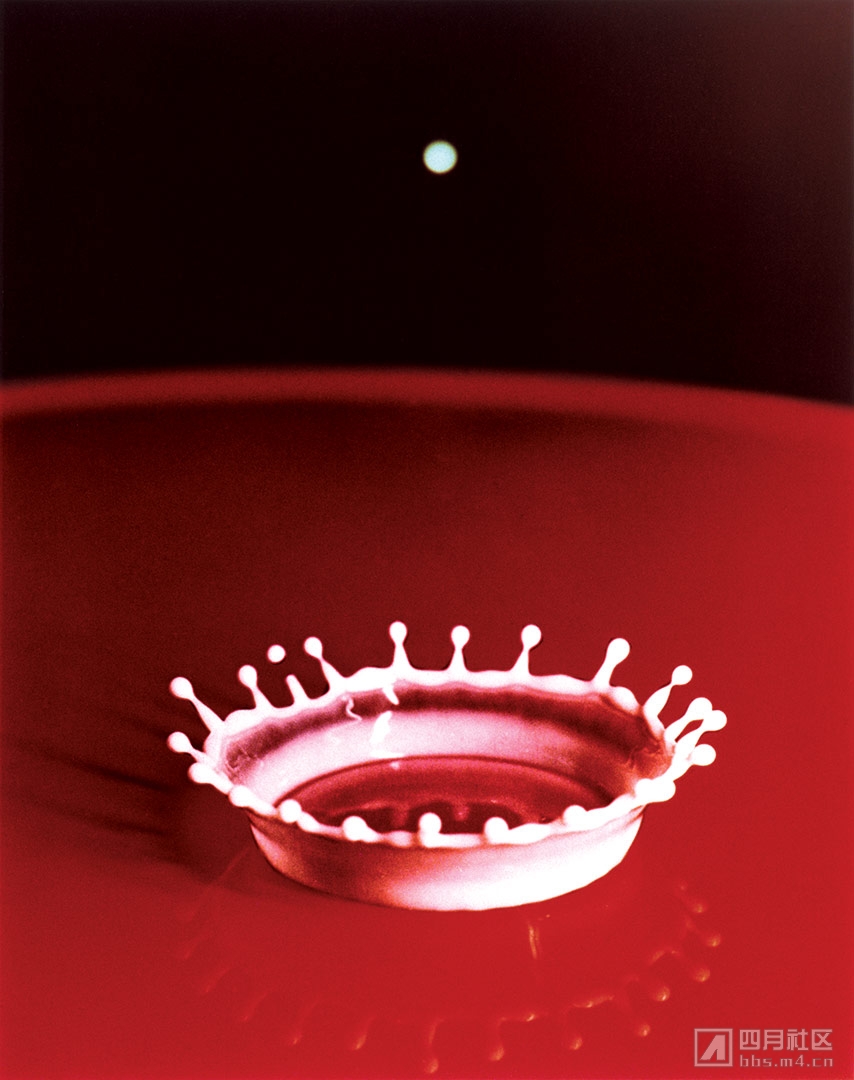
哈罗德•埃杰顿把一个牛奶滴管与一个计时器,和一架他自己发明的照相机连接起来,在此之前,人们几乎不可能不借助重型设备在黑暗的环境中拍摄一张好照片。而且拍摄这样的一个瞬间也没有多大的意义。但是,50年代的时候,在他位于麻省理工学院的实验室里,埃杰顿着手设计这个将会改变未来摄影前景的流程。这位电子工程专业的教授把高科技的闪光灯与照相机快门马达连接起来,获取肉眼无法察觉的瞬间图像。“皇冠状奶滴”,这种革命性的定格动画摄影手法,凝固了一滴牛奶掉落在桌面上的瞬间,皇冠状的液体只会出现一毫秒。这张照片证明,摄影可以帮助人们更好地了解客观世界。埃杰顿所使用的方法为现代电子闪光灯奠定了基础。
埃杰顿花费多年时间不断完善他的奶滴摄影,大部分都是黑白照片,其中有一张照片出现在1937年纽约现代艺术博物馆的第一次摄影展上。尽管这个被称为“Doc”的人还拍摄了其它转瞬即逝的瞬间,比如气球的爆裂和子弹穿过一只苹果,但他的奶滴照片依然代表着摄影创造艺术的精髓。
英勇的游击队员
阿尔贝托•柯达
1960年
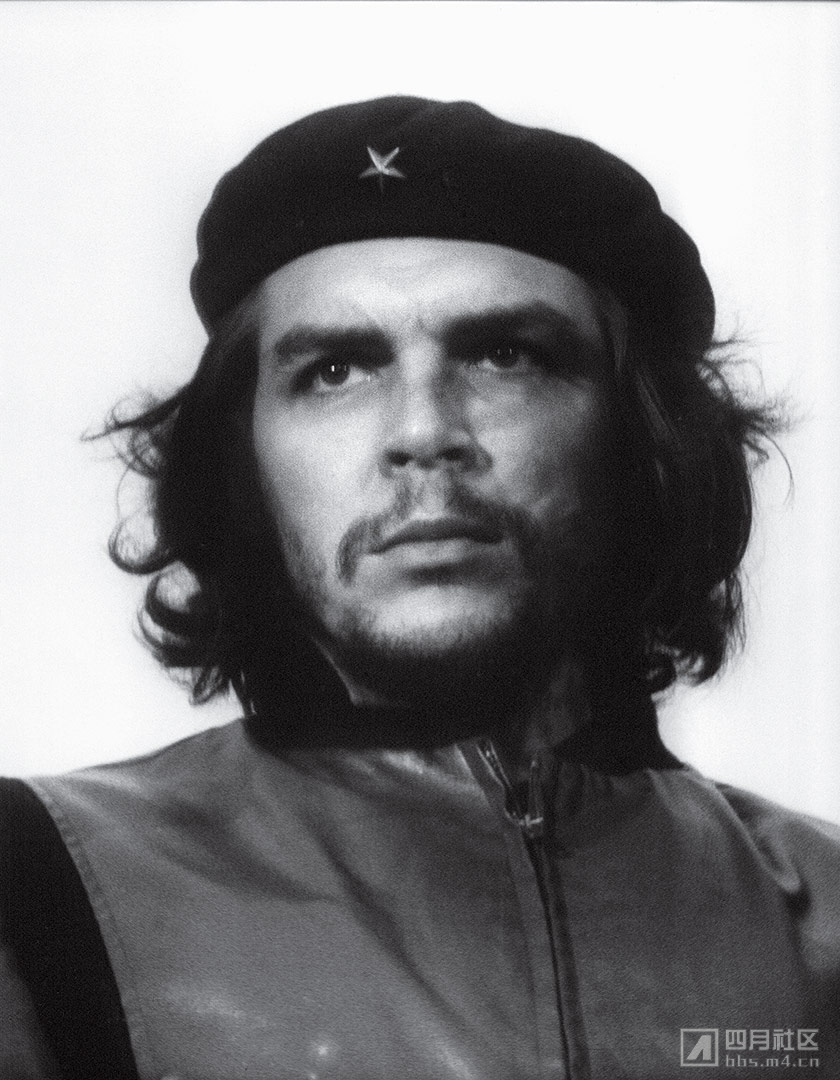
在•阿尔贝托柯达为古巴革命者切•格瓦拉拍摄标志性的照片之前的一天,一艘船在哈瓦那海港爆炸,数十名船员的码头工人丧生。在为《革命报》报道葬礼现场情况时,柯达主要关注的是菲德尔•卡斯特洛,他正在强烈谴责美国一手策划了爆炸事件。之后,他随手拍摄了两张卡斯特洛年轻盟友的照片,并没有在报纸上发表。当格瓦拉于7年后在玻利维亚的一次游击队行动中牺牲之后,古巴当局认定他是革命烈士,柯达这张革命者戴着贝雷帽的照片才成为了不朽的经典。顷刻之间,英勇的游击队员形象被全世界的艺术家、律师和广告从业者采用,出现在从示威艺术到内衣、到饮料包装上。这是一种对叛逆的文化表现方式,这张照片流传甚广,被大量复制。它的影响力早已超越了目光坚毅的拍摄对象的自身形象。
案例住宅22号,洛杉矶
朱利斯•舒尔曼
1960年
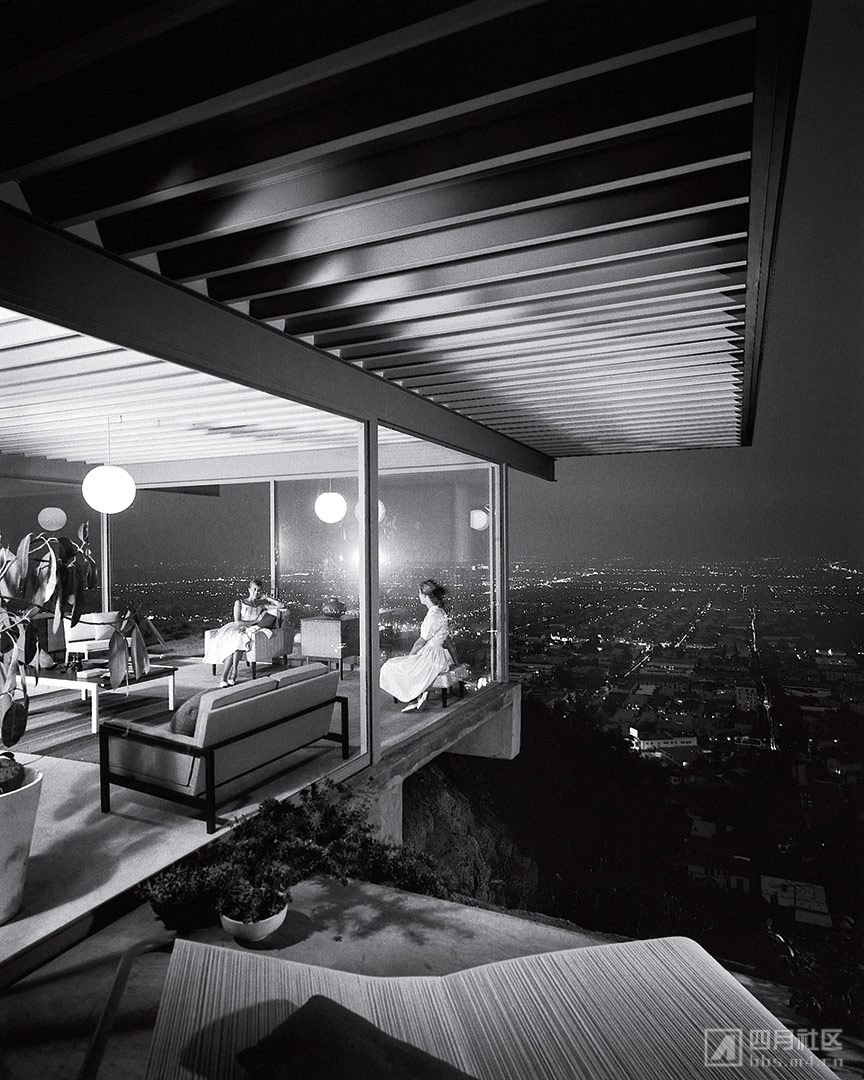
几十年来,加利福尼亚之梦意味着在银色天堂拥有一套灰泥房屋。重点是一定要有种着棕榈树的院子,而不是灰色的围墙。朱利斯•舒尔曼改变了这个观点。1960年5月,这位出生在布鲁克林的摄影师前往建筑师皮埃尔•科恩格的斯塔尔住宅。那是一桩建在好莱坞山坡上的全玻璃房屋,可以欣赏到让人透不过气来的洛杉矶全景。总共36套房屋,是为了表现现代主义理论和工业材料的建筑试验品。舒尔曼给大多数房间拍了照,目的是消除现代主义的神秘感,强调它的简单美学和棱角感。其中影响最大的作品是案例住宅22号。为了展现这所住宅的悬空效果,舒尔曼让两位优雅的女士身着裙装坐在房间里,她们就像是漂浮在虚幻、闪烁的城市上空。这张被他称为自己的“大师级作品”的照片,是有史以来最成功的房地产照片。它完美第展现了气势磅礴的呈现感,把一所房屋变成了星光环绕的好莱坞和加利福尼亚这片乐土上美好生活的象征。要感谢舒尔曼,现在加利福尼亚之梦包括了漂浮在天空中的一个玻璃盒子。
跃向自由
彼得•雷宾
1961年
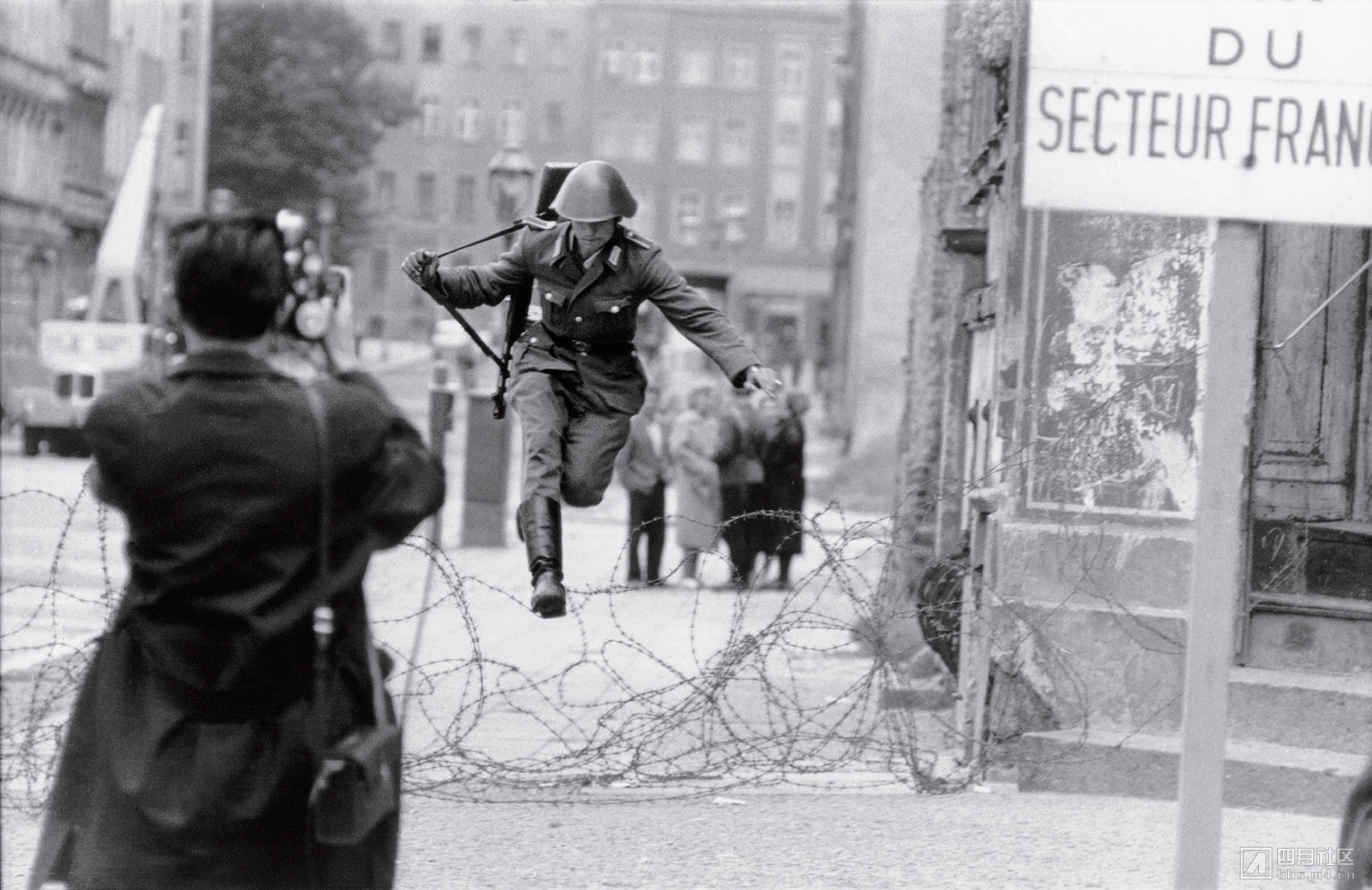
二战之后,盟军政府把柏林划分为四个占领区。但各个区域的状况差异巨大,从1949年到1961年,250万东德居民逃离苏联占领区,投奔自由的西方。为了阻挡人们离开,东德领导人瓦尔特•乌布利希在1961年8月初架起铁丝网和空心砖作为障碍物。几天后,美联社摄影师彼得•雷宾预感到会有叛逃事件发生。他和其它极为摄影师聚在铁丝网边,看到一群西德居民怂恿一位19岁的边防兵汉斯•康拉德•舒曼,他们喊道:“到这边来!”舒曼后来说,他不想“生活在封闭的环境中”,于是突然之间跃过了铁丝网。之后他丢下步枪,立即被人群护送离开。雷宾的照片通过美联社的网络迅速登上世界各大媒体的头条。作为第一个叛逃的东德士兵,舒曼被塑造成渴望自由的偶像,最终导致东德竖起了永久性的柏林墙。但舒曼似乎无法承受这张照片所带来的后续影响。尽管他在西方拥有了安静的生活,但始终不能接受自己无意中塑造出的形象。最终在1998年自杀。
圣诞夜
马里克•西迪贝
1963年
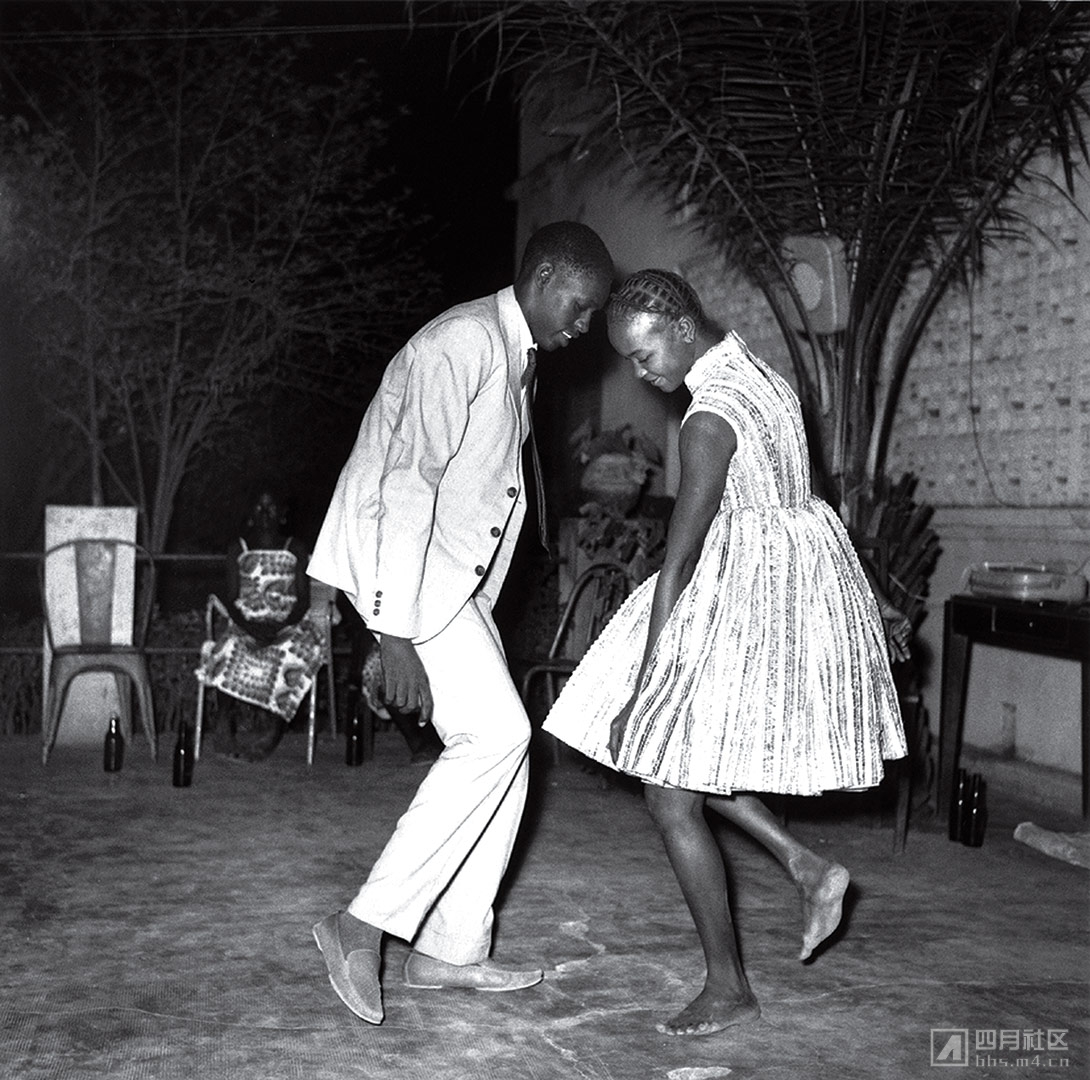
马里摄影师马里克•西迪贝的生活轨迹就是这个国家的变化轨迹。他早先为家里放羊,之后做过珠宝厂学徒和摄影师。当法国的殖民统治在1960年结束的时候,他捕捉到了这个国家发生的微妙而深刻的变化。西迪贝的绰号是“巴马科之眼”,他拍摄了数千张照片,完整记录了欢欣鼓舞的新时代如何改变了首都城市。“每个人都想要最新的巴黎时尚。”他看到年轻人穿上时髦的服装,骑着黄蜂牌小摩托,在公共场合亲热,好像在拥抱一个没有枷锁的新世界。1963年代的圣诞节前夜,西迪贝在一个俱乐部里看到了一对年轻的夫妇,他们的眼中只有对方。被他叫做“观察的天赋”让西迪贝捕捉到他们平静而又甜蜜的姿态,他们把头抵在一起,占有了空旷的舞池。西迪贝说:“我们进入了一个新时代,人们想要跳舞,音乐释放了我们。突然之间,男青年开始接近女青年,把她们抱在怀里。之前这是不被允许的行为。每个人都想被拍摄下跳舞的姿态。”
原文:
Country Doctor
W. Eugene Smith
1948
Although lauded for his war photography, W. Eugene Smith left his most enduring mark with a series of midcentury photo essays for LIFE magazine. The Wichita, Kans.–born photographer spent weeks immersing himself in his subjects’ lives, from a South Carolina nurse-midwife to the residents of a Spanish village. His aim was to see the world from the perspective of his subjects—and to compel viewers to do the same. “I do not seek to possess my subject but rather to give myself to it,” he said of his approach. Nowhere was this clearer than in his landmark photo essay “Country Doctor.” Smith spent 23 days with Dr. Ernest Ceriani in and around Kremmling, Colo., trailing the hardy physician through the ranching community of 2,000 souls beneath the Rocky Mountains. He watched him tend to infants, deliver injections in the backseats of cars, develop his own x-rays, treat a man with a heart attack and then phone a priest to give last rites. By digging so deeply into his assignment, Smith created a singular, starkly intimate glimpse into the life of a remarkable man. It became not only the most influential photo essay in history but the aspirational template for the form.
Camelot
Hy Peskin
1953
Before they could become American royalty, America needed to meet John Fitzgerald Kennedy and Jacqueline Lee Bouvier. That introduction came when Hy Peskin photographed the handsome politician on the make and his radiant fiancée over a summer weekend in 1953. Peskin, a renowned sports photographer, headed to Hyannis Port, Mass., at the invitation of family patriarch Joseph Kennedy. The ambassador, eager for his son to take the stage as a national figure, thought a feature in the pages of LIFE would foster a fascination with John, his pretty girlfriend and one of America’s wealthiest families. That it did. Peskin put together a somewhat contrived “behind the scenes” series titled “Senator Kennedy Goes A-Courting.” While Jackie bristled at the intrusion—John’s mother Rose even told her how to pose—she went along with the staging, and readers got to observe Jackie mussing the hair of “the handsomest young member of the U.S. Senate,” playing football and softball with her future in-laws, and sailing aboard John’s boat, Victura. “They just shoved me into that boat long enough to take the picture,” she later confided to a friend.
It was pitch-perfect brand making, with Kennedy on the cover of the world’s most widely read photo magazine, cast as a self-assured playboy prepared to say goodbye to bachelorhood. A few months later LIFE would cover the couple’s wedding, and by then America was captivated. In the staid age of Dwight David Eisenhower and Richard Milhous Nixon, Peskin unveiled the face of Camelot, one that changed America’s perception of politics and politicians, and set John and Jackie off on becoming the most recognizable couple on the planet.
Trolley—New Orleans
Robert Frank
1955
Uncomfortable truths tend to carry consequences for the teller. When Robert Frank’s book The Americans was released, Practical Photography magazine dismissed the Swiss-born photographer’s work as a collection of “meaningless blur, grain, muddy exposures, drunken horizons and general sloppiness.” The book’s 83 images were taken as Frank crisscrossed the U.S. on several road trips in the mid-1950s, and they captured a country on the cusp of change: rigidly segregated but with the civil rights movement stirring, rooted in family and rural tradition yet moving headlong into the anonymity of urban life.
Nowhere is this tension higher than in Trolley—New Orleans, a fleeting moment that conveys the brutal social order of postwar America. The picture, shot a few weeks before Rosa Parks refused to give up her seat on a bus in Montgomery, Ala., was unplanned. Frank was shooting a street parade when he saw the trolley passing. Spinning around, Frank raised his camera and shot just before the trolley disappeared from view. The picture was used on the cover of early editions of The Americans, fueling criticism that the work was anti-American. Of course Frank—who became a U.S. citizen in 1963, five years after The Americans was published—simply saw his adopted country as it was, not as it imagined itself to be. Half a century later, that candor has made The Americans a monument of documentary and street photography. Frank’s loose and subjective style liberated the form from the conventions of photojournalism established by life magazine, which he dismissed as “goddamned stories with a beginning and an end.”
Dovima with elephants, evening dress by Dior, Cirque d'Hiver, Paris, August 1955
Richard Avedon
1955
When Richard Avedon photographed Dovima at a Paris circus in 1955 for Harper’s Bazaar, both were already prominent in their fields. She was one of the world’s most famous models, and he was one of the most famous fashion photographers. It makes sense, then, that Dovima With Elephants is one of the most famous fashion photographs of all time. But its enduring influence lies as much in what it captures as in the two people who made it. Dovima was one of the last great models of the sophisticated mold, when haute couture was a relatively cloistered and elite world. After the 1950s, models began to gravitate toward girl-next-door looks instead of the old generation’s unattainable beauty, helping turn high fashion into entertainment. Dovima With Elephants distills that shift by juxtaposing the spectacle and strength of the elephants with Dovima’s beauty—and the delicacy of her gown, which was the first Dior dress designed by Yves Saint Laurent. The picture also brings movement to a medium that was previously typified by stillness. Models had long been mannequins, meant to stand still while the clothes got all the attention. Avedon saw what was wrong with that equation: clothes didn’t just make the man; the man also made the clothes. And by moving models out of the studio and placing them against exciting backdrops, he helped blur the line between commercial fashion photography and art. In that way, Dovima With Elephants captures a turning point in our broader culture: the last old-style model, setting fashion off on its new path.
Emmett Till
David Jackson
1955
In August 1955, Emmett Till, a black teenager from Chicago, was visiting relatives in Mississippi when he stopped at Bryant’s Grocery and Meat Market. There he encountered Carolyn Bryant, a white woman. Whether Till really flirted with Bryant or whistled at her isn’t known. But what happened four days later is. Bryant’s husband Roy and his half brother, J.W. Milam, seized the 14-year-old from his great-uncle’s house. The pair then beat Till, shot him, and strung barbed wire and a 75-pound metal fan around his neck and dumped the lifeless body in the Tallahatchie River. A white jury quickly acquitted the men, with one juror saying it had taken so long only because they had to break to drink some pop. When Till’s mother Mamie came to identify her son, she told the funeral director, “Let the people see what I’ve seen.” She brought him home to Chicago and insisted on an open casket. Tens of thousands filed past Till’s remains, but it was the publication of the searing funeral image in Jet, with a stoic Mamie gazing at her murdered child’s ravaged body, that forced the world to reckon with the brutality of American racism. For almost a century, African Americans were lynched with regularity and impunity. Now, thanks to a mother’s determination to expose the barbarousness of the crime, the public could no longer pretend to ignore what they couldn’t see.
Milk Drop Coronet
Harold Edgerton
1957
Before Harold Edgerton rigged a milk dropper next to a timer and a camera of his own invention, it was virtually impossible to take a good photo in the dark without bulky equipment. It was similarly futile to try to photograph a fleeting moment. But in the 1950s at his lab at MIT, Edgerton started tinkering with a process that would change the future of photography. There the electrical-engineering professor combined high-tech strobe lights with camera shutter motors to capture moments imperceptible to the naked eye. Milk Drop Coronet, his revolutionary stop-motion photograph, freezes the impact of a drop of milk on a table, a crown of liquid discernible to the camera for only a millisecond. The picture proved that photography could advance human understanding of the physical world, and the technology Edgerton used to take it laid the foundation for the modern electronic flash.
Edgerton worked for years to perfect his milk-drop photographs, many of which were black and white; one version was featured in the first photography exhibition at New York City’s Museum of Modern Art, in 1937. And while the man known as Doc captured other blink-and-you-missed-it moments, like balloons bursting and a bullet piercing an apple, his milk drop remains a quintessential example of photography’s ability to make art out of evidence.
Guerillero heroico
Alberto Korda
1960
The day before Alberto Korda took his iconic photograph of Cuban revolutionary Che Guevara, a ship had exploded in Havana Harbor, killing the crew and dozens of dockworkers. Covering the funeral for the newspaper Revolución, Korda focused on Fidel Castro, who in a fiery oration accused the U.S. of causing the explosion. The two frames he shot of Castro’s young ally were a seeming afterthought, and they went unpublished by the newspaper. But after Guevara was killed leading a guerrilla movement in Bolivia nearly seven years later, the Cuban regime embraced him as a martyr for the movement, and Korda’s image of the beret-clad revolutionary soon became its most enduring symbol. In short order, Guerrillero Heroico was appropriated by artists, causes and admen around the world, appearing on everything from protest art to underwear to soft drinks. It has become the cultural shorthand for rebellion and one of the most recognizable and reproduced images of all time, with its influence long since transcending its steely-eyed subject.
Case Study House no. 22, Los Angeles
Julius Shulman
1960
For decades, the California Dream meant the chance to own a stucco home on a sliver of paradise. The point was the yard with the palm trees, not the contour of the walls. Julius Shulman helped change all that. In May 1960, the Brooklyn-born photographer headed to architect Pierre Koenig’s Stahl House, a glass-enclosed Hollywood Hills home with a breathtaking view of Los Angeles—one of 36 Case Study Houses that were part of an architectural experiment extolling the virtues of modernist theory and industrial materials. Shulman photographed most of the houses in the project, helping demystify modernism by highlighting its graceful simplicity and humanizing its angular edges. But none of his other pictures was more influential than the one he took of Case Study House No. 22. To show the essence of this air-breaking cantilevered building, Shulman set two glamorous women in cocktail dresses inside the house, where they appear to be floating above a mythic, twinkling city. The photo, which he called “one of my masterpieces,” is the most successful real estate image ever taken. It perfected the art of aspirational staging, turning a house into the embodiment of the Good Life, of stardusted Hollywood, of California as the Promised Land. And, thanks to Shulman, that dream now includes a glass box in the sky.
Leap into Freedom
Peter Leibing
1961
Following World War II, the conquering Allied governments carved Berlin into four occupation zones. Yet each part was not equal, and from 1949 to 1961 some 2.5 million East Germans fled the Soviet section in search of freedom. To stop the flow, East German leader Walter Ulbricht had a barbed-wire-and-cinder-block barrier thrown up in early August 1961. A few days later, Associated Press photographer Peter Leibing was tipped off that a defection might happen. He and other cameramen gathered and watched as a West Berlin crowd enticed 19-year-old border guard Hans Conrad Schumann, yelling to him, “Come on over!” Schumann, who later said he did not want to “live enclosed,” suddenly ran for the barricade. As he cleared the sharp wires he dropped his rifle and was whisked away. Sent out across the AP wire, Leibing’s photo ran on front pages across the world. It made Schumann, reportedly the first known East German soldier to flee, into a poster child for those yearning to be free, while lending urgency to East Germany’s push for a more permanent Berlin Wall. Schumann was sadly haunted by the weight of it all. While he quietly lived in the West, he could not grapple with his unintended stature as a symbol of freedom, and he committed suicide in 1998.
Nuit de Noël (Happy Club)
Malick Sidibè
1963
Malian photographer Malick Sidibé’s life followed the trajectory of his nation. He started out herding his family’s goats, then trained in jewelry making, painting and photography. As French colonial rule ended in 1960, he captured the subtle and profound changes reshaping his nation. Nicknamed the Eye of Bamako, Sidibé took thousands of photos that became a real-time chronicle of the euphoric zeitgeist gripping the capital, a document of a fleeting moment. “Everyone had to have the latest Paris style,” he observed of young people wearing flashy clothes, straddling Vespas and nuzzling in public as they embraced a world without shackles. On Christmas Eve in 1963, Sidibé happened on a young couple at a club, lost in each other’s eyes. What Sidibé called his “talent to observe” allowed him to capture their quiet intimacy, heads brushing as they grace an empty dance floor. “We were entering a new era, and people wanted to dance,” Sidibé said. “Music freed us. Suddenly, young men could get close to young women, hold them in their hands. Before, it was not allowed. And everyone wanted to be photographed dancing up close.”
|
|